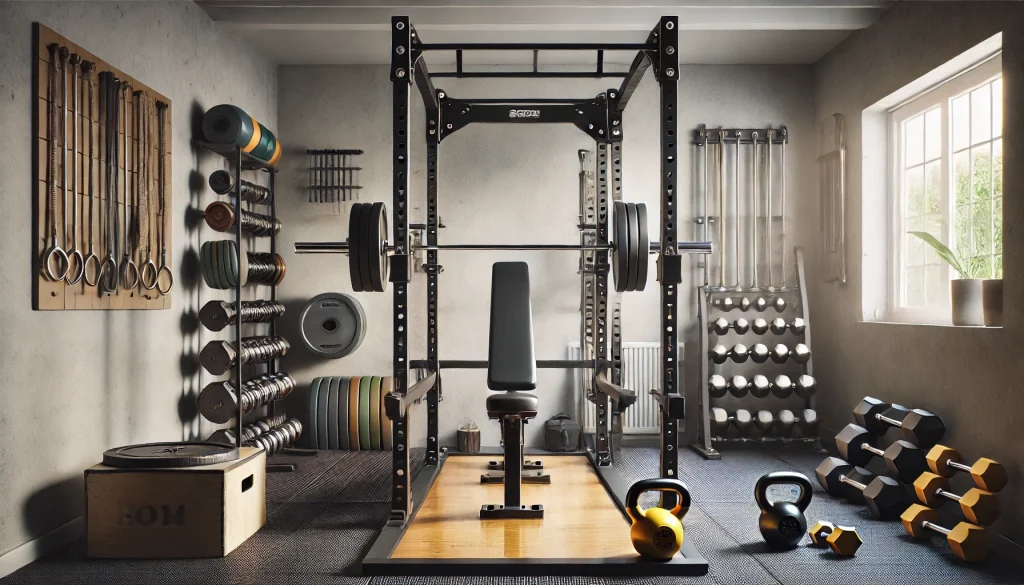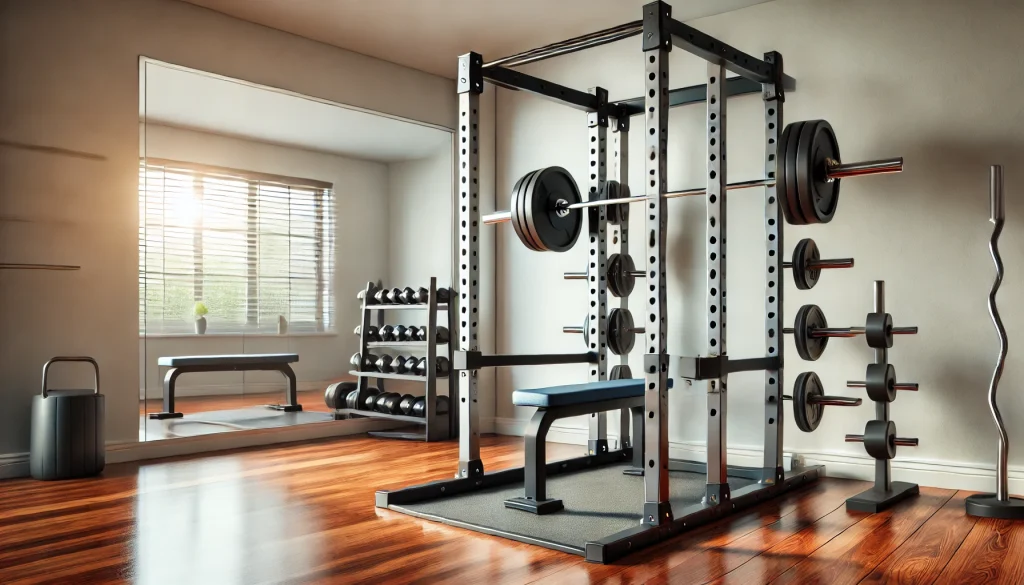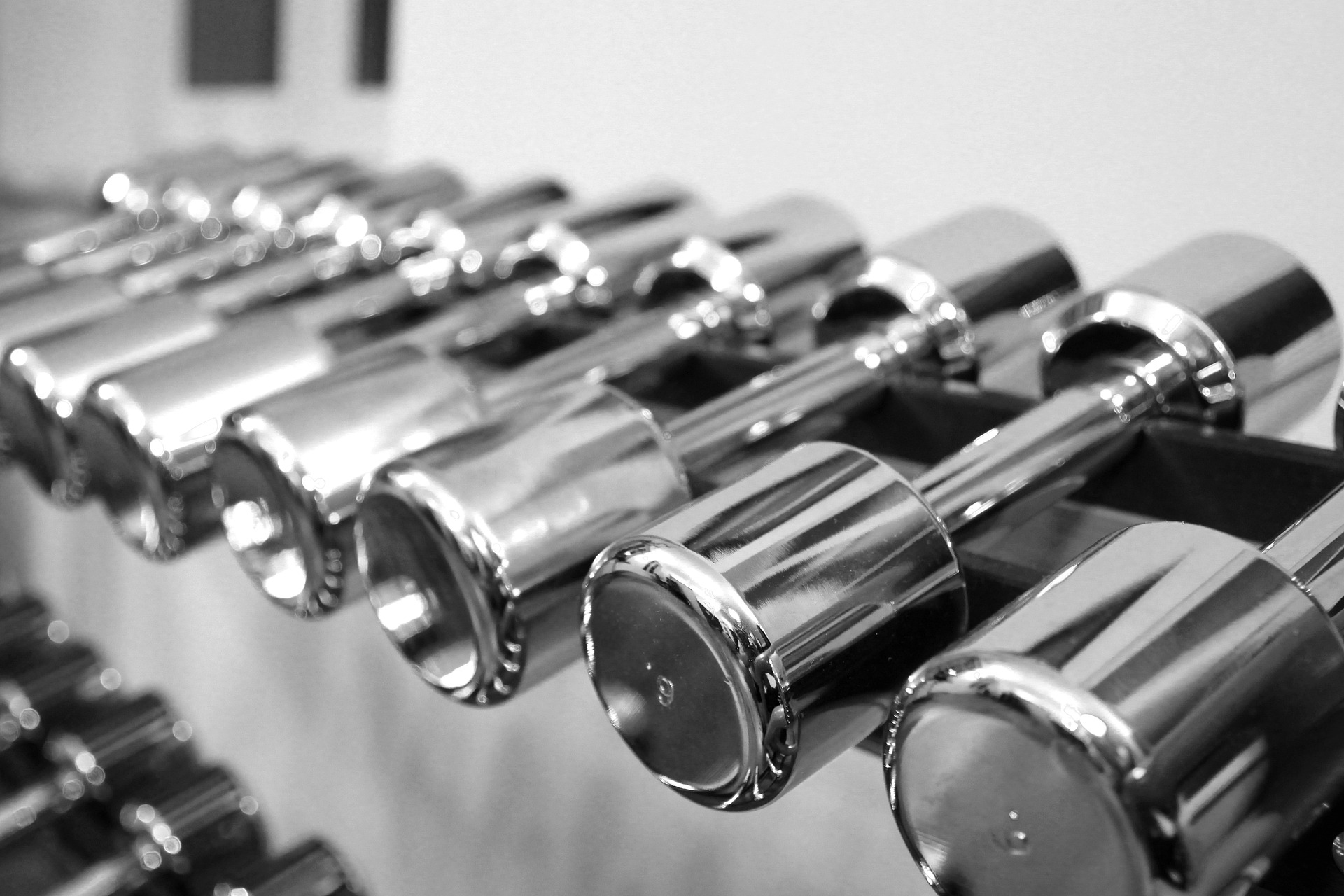The Ultimate Guide to Choosing a Squat Rack for Your Home Gym
Introduction
When setting up a home gym, choosing the right equipment is crucial for creating a space that encourages effective workouts. Among the various pieces of equipment, a squat rack stands out as a foundational element, providing the versatility to perform essential strength-training exercises like squats, bench presses, and more. Investing in a high-quality squat rack or a home gym squat cage can elevate your training and ensure safety during heavy lifts.
Squat racks are not just for powerlifters or serious athletes; they are valuable for anyone looking to improve strength, build muscle, or maintain overall fitness. In this guide, we’ll explore the different types of squat racks, key features to consider, and how to choose the best option for your home gym setup. Whether you’re a beginner or a seasoned lifter, understanding the intricacies of a squat rack can help you make an informed decision.
Why a Squat Rack is Essential for Home Gyms
A squat rack often serves as the centerpiece of a home gym. It allows for a range of exercises that target multiple muscle groups, making it one of the most versatile pieces of gym equipment you can own. Here’s why adding a squat rack to your home gym is a game-changer:
- Versatility: A squat rack enables various exercises like squats, bench presses, overhead presses, and more. With the addition of attachments, it can function as a multi-purpose machine, replacing the need for several standalone pieces of equipment.
- Safety: Using a squat rack with safety spotter arms can prevent injuries, especially when lifting heavy weights alone. This is particularly important for home gym users who may not always have a spotter.
- Durability: Squat racks are built to handle heavy weights, often supporting up to 1,000 pounds or more. Their sturdy construction ensures they can last for years, even with frequent use.
- Customization: Many squat racks allow for modular additions, like pull-up bars, dip stations, and plate storage, making it easier to customize the setup according to your training preferences.
A home gym squat cage can transform your training routine by offering a safer and more efficient way to perform key strength movements, making it a worthwhile investment for both beginners and experienced lifters.

Types of Squat Racks for Home Gyms
Choosing the right type of squat rack is the first step toward building an effective home gym. There are several types of racks, each with its own advantages and best-use scenarios:
- Power Racks: These are the most popular choice for home gym enthusiasts. Power racks, or full cages, feature four sturdy uprights and offer ample safety features like spotter arms and attachments for different exercises. They are ideal for those looking for a comprehensive and safe setup.
- Half Racks: A half rack is a smaller version of a power rack, with two additional uprights compared to a squat stand. It provides more stability and often includes weight storage options. Half racks are great for those who want the benefits of a power rack but have limited space.
- Squat Stands: Compact and affordable, squat stands consist of two independent uprights. They are easy to move and perfect for those with limited space. However, they offer less stability and safety compared to full or half racks, making them more suitable for lighter lifts.
- Combo Racks: Designed primarily for powerlifting, combo racks are versatile enough for both squatting and bench pressing. They are typically used in competitions but can be a great addition for serious lifters who want precision and versatility in their home setup.
- Folding Racks: These racks are perfect for garage gyms where space is at a premium. Folding racks like the PRX Profile Series can be folded up against the wall when not in use, freeing up valuable space for other activities. They provide a great balance between functionality and space-saving design.
Each of these options has unique benefits and is suited to different types of training and space requirements. Selecting the right type will depend on your specific goals, available space, and budget.
Key Features to Consider When Buying a Squat Rack
When selecting a squat rack, several features will influence its suitability for your home gym. Here’s a detailed look at the most important factors to consider:
- Upright Size and Material: The size of the uprights and the gauge of steel used in the rack are critical for stability and durability. Most modern squat racks feature 3×3-inch uprights, which offer superior strength and compatibility with a wide range of attachments. An 11-gauge steel construction is standard, balancing strength with cost-effectiveness. For long-term use, opting for a 3×3 upright ensures compatibility with future attachments and accessories.
- Weight Capacity: While most squat racks support a weight capacity of 1,000 pounds or more, it’s important to consider your lifting goals. A higher weight capacity means a stronger and more durable rack, which is particularly beneficial for lifters who plan to push their limits over time.
- Hole Spacing and Hardware: Squat racks come with varying hole sizes and spacing, which determine how precisely you can adjust the height of attachments like J-cups and safety spotters. Common options include 1-inch and 5/8-inch holes. For more precise adjustments, 1-inch spacing in the bench area, known as Westside hole spacing, is ideal.
- Rack Depth and Height: The depth of a power rack (the distance between the front and back uprights) can impact your comfort and ability to perform certain exercises. A depth of 24 to 30 inches is often sufficient for most users, offering enough space for movements without taking up too much room in your gym. Height is also crucial—tall racks are great for pull-ups but may not fit in rooms with low ceilings.
- Safety Features: Safety is paramount when training at home. Look for racks that come with safety spotter arms or safety straps, which can catch the bar if you fail a lift. These are essential for those who train alone without a spotter.
- Modularity and Expandability: A modular squat rack allows you to add attachments like pull-up bars, dip stations, and cable attachments. This flexibility ensures that your rack can evolve with your training needs, making it a cost-effective investment in the long run.
By considering these features, you can choose a squat rack that fits your current training needs while offering room to grow as your strength and fitness goals evolve.

Top Recommendations for Home Gym Squat Cages
With numerous options available, here are some top recommendations across different price ranges:
- Budget-Friendly Options:
- Fitness Reality 810XLT: A great entry-level rack with a 14-gauge steel frame that can support up to 800 pounds. It offers excellent value for its price and is perfect for beginners.
- Titan T2: A compact and affordable power rack that fits well in smaller spaces. It has a sturdy build and includes safety bars, making it a solid choice for those just starting out.
- Mid-Range Picks:
- Rep PR-4000: Known for its customizable options, the PR-4000 offers 3×3-inch uprights and 11-gauge steel, making it a versatile and durable choice. It’s suitable for lifters who want more flexibility in their setup.
- Bells of Steel Hydro Series: A robust and affordable option that combines quality with functionality, making it ideal for intermediate lifters looking for a step up from entry-level racks.
- High-End Choices:
- Rogue Monster Rack: Made in the USA, this rack is a favorite among serious lifters. It boasts 3×3-inch 11-gauge steel uprights, 1-inch hole spacing, and a wide range of attachments.
- Rep PR-5000: This premium rack is designed for those who want a high-end, customizable solution. It’s built to last, with heavy-duty steel construction and a range of add-ons for a complete training experience.
These options provide a balance of features, durability, and price points, ensuring there’s a suitable choice for every type of lifter.
Setting Up Your Squat Rack in a Home Gym
The setup of your squat rack can significantly impact your workout experience. Here are some tips for setting up your squat rack:
- Space Considerations: Measure the available space carefully before purchasing your rack. Consider the rack’s footprint, the space needed for exercises, and clearance for accessories like pull-up bars.
- Ceiling Height: Ensure your ceiling height allows for the full use of the rack, especially if you plan to include a pull-up bar. A height of at least 7-8 feet is recommended for most racks.
- Assembly Tips: Assemble your squat rack according to the manufacturer’s instructions, and ensure that all bolts are tightened securely. It’s advisable to have a friend help with assembly for larger racks.
Proper setup ensures that your home gym squat cage is safe and ready for intense workouts.
New vs. Used Squat Racks: What Should You Buy?
When deciding between new and used squat racks, consider the following:
- Durability: Squat racks are built to last, often made from high-quality steel. This means that a well-maintained used rack can offer similar performance to a new one.
- Cost Savings: While buying used can save money, popular models from brands like Rogue and Rep often maintain high resale values. In such cases, the cost difference may not be significant enough to warrant going used.
- Warranty Considerations: New racks often come with warranties, providing peace of mind. This can be beneficial if you want long-term support for your investment.
Ultimately, the decision depends on your budget and preference for a warranty. A used rack can be a smart choice if you find a well-maintained model at a reasonable price.

Conclusion
Choosing the right squat rack for your home gym is a crucial decision that can impact the quality and safety of your workouts. By considering factors like the type of rack, material, safety features, and expandability, you can find the perfect squat rack or home gym squat cage that meets your needs. Whether you’re building your first home gym or upgrading your setup, investing in a quality squat rack ensures that you have a versatile and durable piece of equipment that will support your fitness journey for years to come.
Ready to take your home gym to the next level? Explore different squat rack options and start building your ideal training space today!



